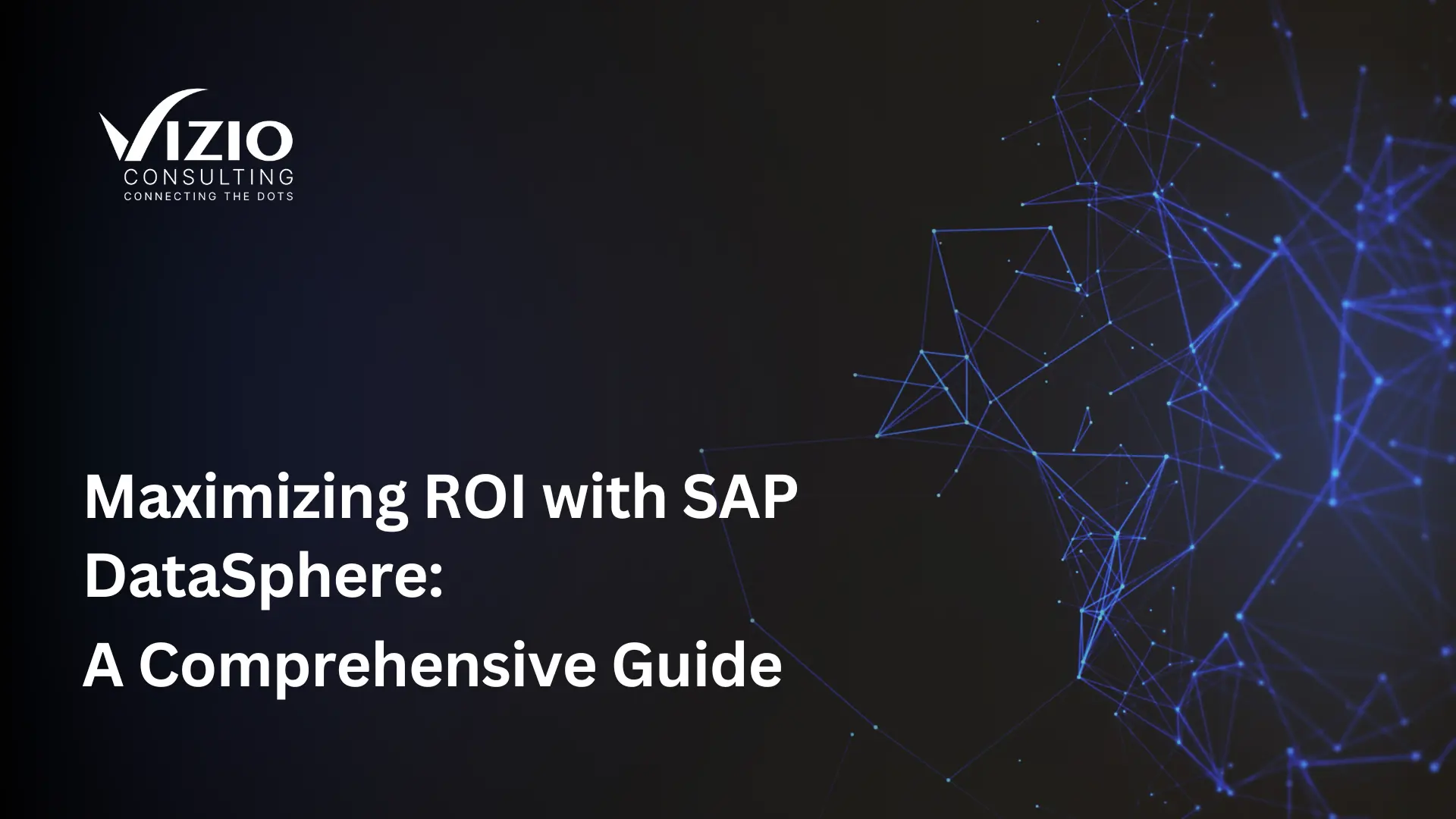In today’s data-driven environment, organizations are always seeking methods to get the most value out of their data investments. A complete data management and analysis solution, SAP DataSphere enables companies to realise their full potential and increase Return on Investment (ROI). This blog aims to provide readers a thorough grasp of SAP DataSphere and provide practical advice for maximising ROI.
- Understanding SAP DataSphere: Revolutionizing Data Management
- Evolution of Data Management: Explore the challenges organizations face in managing and harnessing the power of data.
- Introduction to SAP DataSphere: Learn about the key features, benefits, and functionalities of SAP DataSphere.
- Integration Capabilities: Recognise the smooth integration of SAP DataSphere with current systems, including SAP and non-SAP applications.
- Preparing for SAP DataSphere Implementation
- Assessing Data Maturity: Determine the data maturity level of your organisation to pinpoint its strengths and shortcomings.
- Data audit and gap analysis: To uncover data sources, quality problems, and integration gaps, do a thorough data audit.
- Data Governance: Organizations must prioritize the accuracy and security of their data. Robust policies for data governance are essential to achieve these goals while also complying with relevant regulations. By implementing strong guidelines for managing information organizations can confidently safeguard privacy and prevent potential issues related to inaccurate or mishandled data.
III. Optimizing Data Collection and Integration
- Streamlining Data Collection: Use SAP DataSphere to gather information from a range of sources, including databases, IoT devices, and external systems.
- Data Integration Best Practices: Apply best practices for data integration, such as data normalization and transformation, as well as data cleansing.
- Ensuring Data Quality: Use tools and procedures for data quality to maintain clean and dependable data within SAP DataSphere.
- Unleashing the Power of Advanced Analytics with SAP DataSphere
- Advanced Analytics Capabilities: Explore SAP DataSphere’s advanced analytics features, such as data modelling, visualization, and predictive analytics.
- Developing Predictive Models: To extract the most useful insights from your data, combine machine learning algorithms with predictive modelling techniques.
- Data-Driven Insights: Use SAP DataSphere to its full potential to produce meaningful insights that will improve decision-making throughout your organization.
- Driving Business Intelligence with SAP DataSphere
- Designing Interactive Dashboards: To present essential data and performance indicators, create dashboards that are user-friendly and aesthetically pleasing.
- Self-Service Analytics: Give business users access to self-service analytics tools so they may independently study data and produce reports.
- Data-Driven Decision-Making: Promote a data-driven culture within your company by using SAP DataSphere to give decision-making processes access to reliable, real-time information.
- Achieving Operational Excellence with SAP DataSphere
- Process Automation: Using SAP DataSphere, automate routine processes and workflows to save time and boost productivity.
- Resource Optimization: Make the most of SAP DataSphere’s real-time insights to improve resource allocation, labour planning, and inventory control.
- Proactive Decision-Making: Leverage real-time monitoring and predictive analytics to enable proactive decision-making, increasing overall operational effectiveness.
VII. Ensuring Data Security and Compliance
- Data Security Measures: Implement strong security methods for protecting data within SAP DataSphere, such as access controls, encryption, and user authentication.
- Regulatory Compliance: To assure lawful and moral data handling practises, understand and abide by data protection regulations like the GDPR or CCPA.
- Data Privacy and Anonymization: Implement data privacy and anonymization strategies to protect sensitive information while still gaining insights.
VIII. Measuring and Improving ROI
- Defining Key Performance Indicators (KPIs): Choose pertinent KPIs to gauge the SAP DataSphere implementation’s return on investment.
- Data Analytics Audits: Conduct routine audits to evaluate the success of data analytics programmes and pinpoint opportunities for development.
- Identifying Improvement Opportunities: Examine the findings of data analytics audits to spot any gaps, obstructions, or places where ROI might be raised.
- Overcoming Challenges and Pitfalls
- Common Implementation Obstacles: Address typical obstacles that organizations may have while implementing SAP DataSphere, such as difficult data integration or opposition to change.
- Implement risk-mitigation measures, such as effective change management and stakeholder involvement, to reduce risks and ensure a smooth implementation process.
- Discover real-world examples and success stories of businesses that have maximized their ROI with SAP DataSphere, and get ideas from their approaches and experiences by studying best practices and case studies.
- Future Trends and Innovations
- Emerging Technologies: Keep up with the most recent developments in data management and analytics, such as augmented analytics, machine learning, and artificial intelligence, and understand how SAP DataSphere can help them increase ROI.
- Continuous Improvement: Adopt a culture of continuous improvement by keeping up with SAP DataSphere updates, new additions, and enhancements to ensure ongoing ROI optimization.
Conclusion
A comprehensive strategy that includes data management, integration, advanced analytics, business intelligence, and operational excellence is needed to maximize ROI using SAP DataSphere. Organizations can unlock the full potential of their data, make wise decisions, increase operational efficiency, and generate measurable ROI by using the tactics and best practices described in this in-depth book. In today’s changing business environment, SAP DataSphere is a potent instrument for maximizing the value of data and gaining a competitive advantage. Embrace the opportunities offered by SAP DataSphere and embark on your journey to maximizing ROI today!

